The Qing Ming festival; or translated as the Clear/Bright Festival, is also known as the Tomb Sweeping Day and is a period of two weeks where Chinese families gather and make visits to their ancestors' graveyards.
Read more about the festival in my blog here
If you have seen a Chinese tomb, you would know that they are usually surrounded by grass and located on higher grounds. The Chinese typically only visits the graves of the dead once a year, and usually this means that the grass would have grown long which would require work to be done.
The term 'sweeping tomb' is derived from this practice as descendants gather and work together to clean up the tomb while presenting offerings in forms of food and paper paraphernalia to be burnt for the dead.
This is probably my first time joining in the Qing Ming pilgrimage to the tombs of the ancestors, as I was born of a different faith where we celebrate All Souls' Day and we only bring flowers and candles and pray at the tombs of my grandparents. My first year being married, and I joined my hubby and in-laws on their annual practice.
This is my food blog, and you do not have to worry that I am about to share about all the details of the tombs and what we did as that would turn most of you away.
I share stuffs like these in my other blogs ;)
The Chinese are definitely food lovers, and even festivals for the dead involve food to be offered to the dead.
I have read about one blogger's concern about sharing food pictures from this festival; on whether it is offensive.
However, I think that the food photos are not offensive; unless one shares on the tomb pictures which may be a little disturbing to some readers out there.
Anyway, I have come to discover myself that there are just so much food and stuffs associated with this festival, and food are prepared to honor the dead; usually their favorite food. After the worship and prayer session completes at the tomb, they will then take the food home to be cooked and shared among the families and relatives.
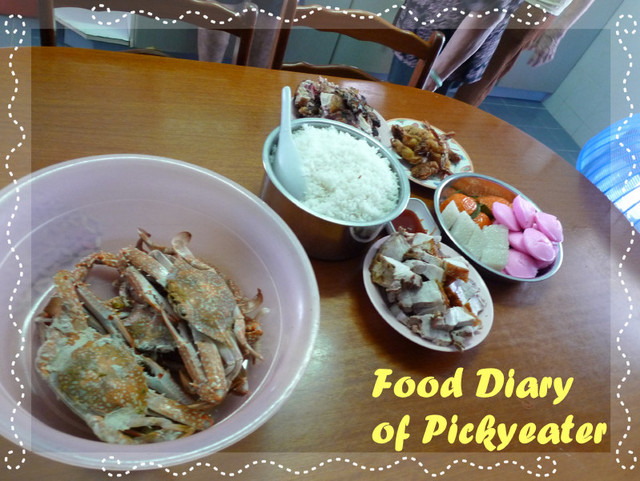 Therefore, there is usually a lot of food as almost everyone (actually everyone is required to join in) is around during the festival.
Therefore, there is usually a lot of food as almost everyone (actually everyone is required to join in) is around during the festival.I joined both my father-in-law and mother-in-law's ancestors tomb visits, on two separate days of the weekend. As my mother-in-law's family was significantly larger in crowd, there was an annual practice of gathering at the eldest uncle's place for lunch after the tomb visit.
The aunts and cousins started cooking; preparing the food for lunch for everyone and there was so much laughter and jokes passed around as everyone reunites and catches up on each other's life.
Food, was definitely in abundance here.
The standard 'must-haves' for the worship include the plate of kueh; from Huat Kueh (pink), Ang Koo (red), and Bee Koh (White) are usually presented to the ancestors.
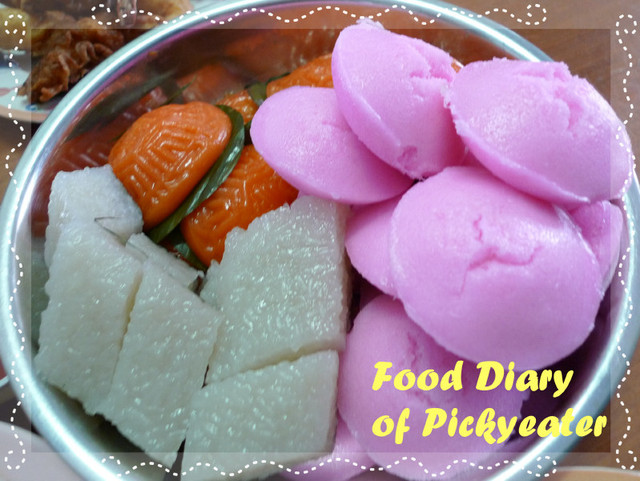
Like all Chinese cakes (or kueh in Malay), there is an auspicious meaning associated with each of them, and let me explain them here.
The Huat Kueh, is actually a steamed rice cake, and can usually be seen at most Chinese festivals. This cake is made in small cup sizes and used for worship of deities and also ancestors, and even consumed on auspicious festivals such as the New year.
The symbol of this cake lies in its phonetic sound of its pronounciation in Chinese; as it literally means Prosperity cake. Therefore, consuming and having it on auspicious festivals simply means more prosperity for the family and the person.
The Ang Koo kueh, is a glutinous rice cake filled with mung bean paste and laid on a banana leaf.
I have written about this cake before, here.
Literally translated as the Red Tortoise Cake, this is usually the favorite among the Chinese for festivals due to the tortoise being a symbol of longevity.
The Bee Koh, is a type of steamed sticky rice cake which is extremely sticky in a compact version. It is sweetened; like most of the Chinese cakes as the Chinese loves the meaning of sweet which harmonizes with their wish for a happy and joyous life filled with sweet surprises.
Besides cakes/kueh, there are also lots of meat and poultry presented to the ancestors.
It is understandable, as in the past, meat is often perceived as a luxury due to its high prices and also the notion that meat is often consumed during celebrations and in a feast.
Roasted Pork (Siew Yoke) is one of the favorite during the Qing Ming or any Chinese worship occasions.
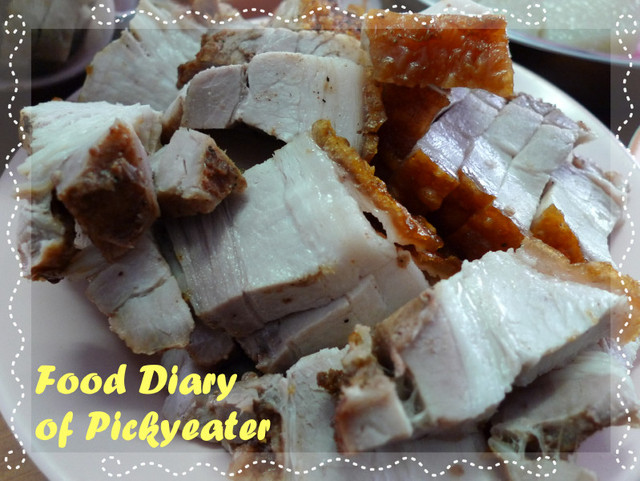
Roasted Chicken is also presented to the ancestors, and also deities. Sometimes, the chicken may be accompanied by roasted duck as well, if the budget permits. However, to make sure that food does not go to waste, the family decided not to get the duck as there is already so much food to pass around.
I second that, for wasting food is far worse than competing on the amount of food to be presented to the ancestors. Furthermore, the most important is the sincerity and not the food, don't you think?
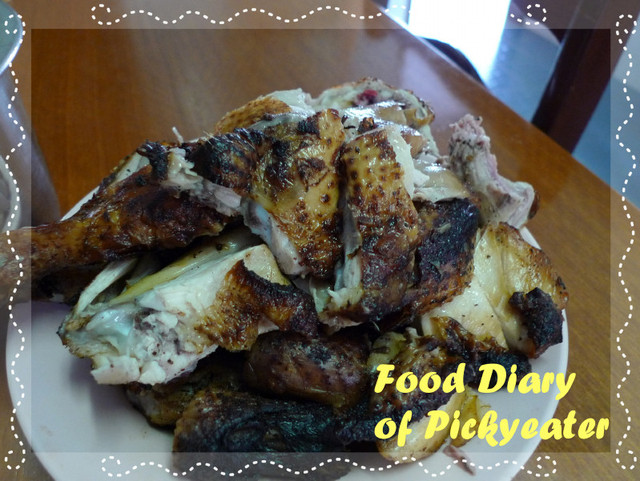
Lor Bak; is a type of minced pork/chicken meat rolled with fried bean curd sheets.
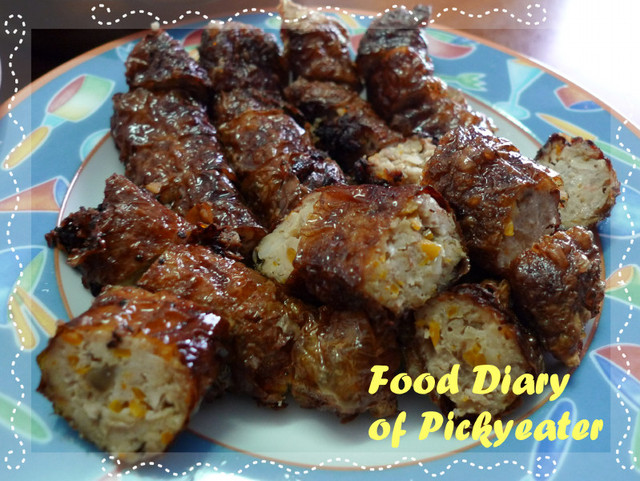
The stuffing also includes minced vegetables. Originating from the Nyonya culture, Lor Bak is popular among the Chinese; particularly the Hokkiens and those of Nyonya origins although it's taste and influence has spread to the rest of the community.
Another Nyonya kueh is the Tee Nya Kueh; which is also a steamed rice cake with practically no taste as it is to be accompanied with the thick and sweet brown palm sugar syrup.
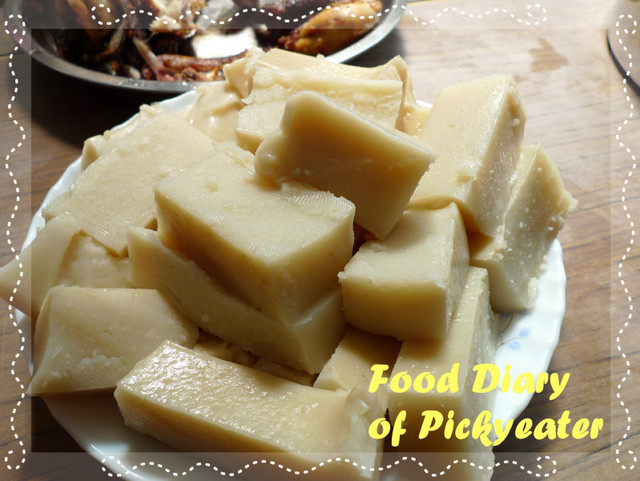
The family takes the food presentation and gathering to a higher notch by including more varieties; including that of seafood for lunch.
I am not complaining; as I am definitely a seafood fan.
Crabs; served steamed
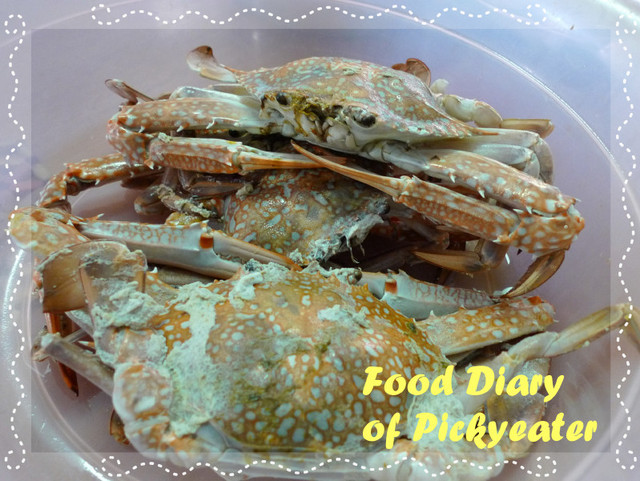
Or deep fried; like that of the Soft Shell Crab version
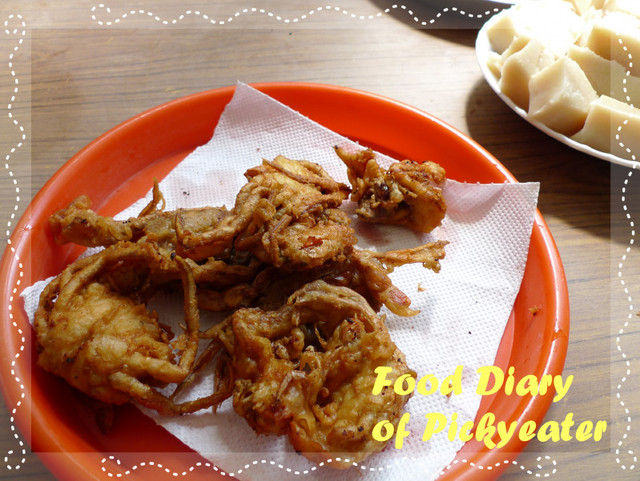
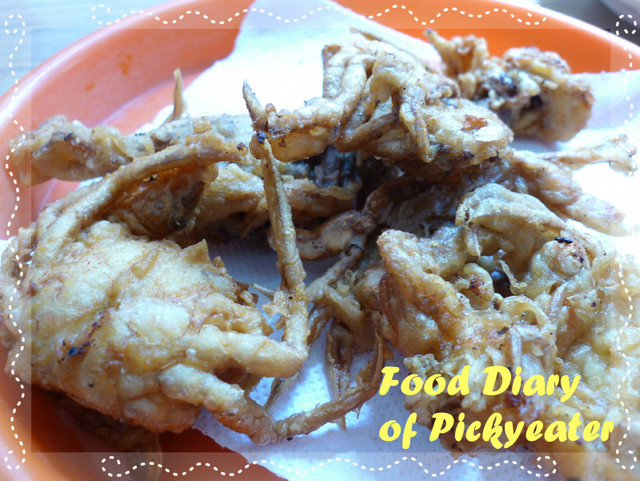
Deep fried prawns
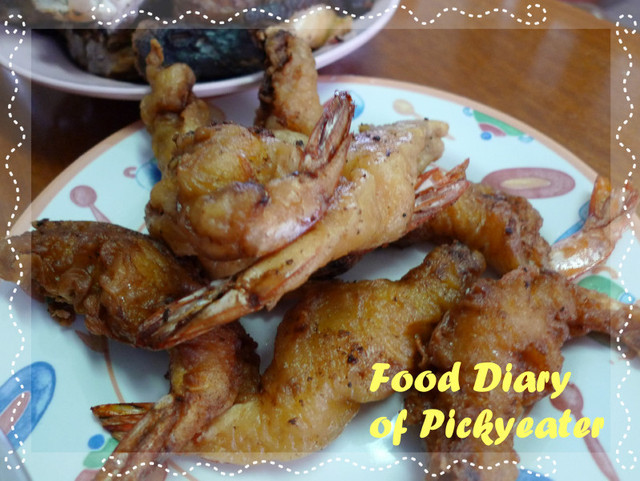
There are also gigantic steamed prawns which I forgot to take photos of; my bad :)
Fruits for sharing
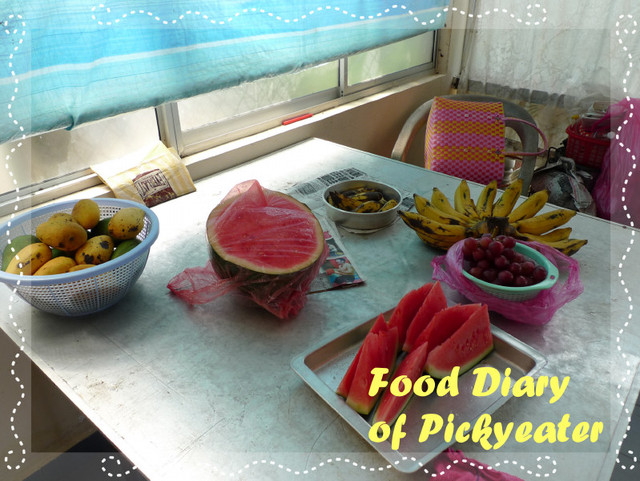
All the food; while the cooking is still in progress...
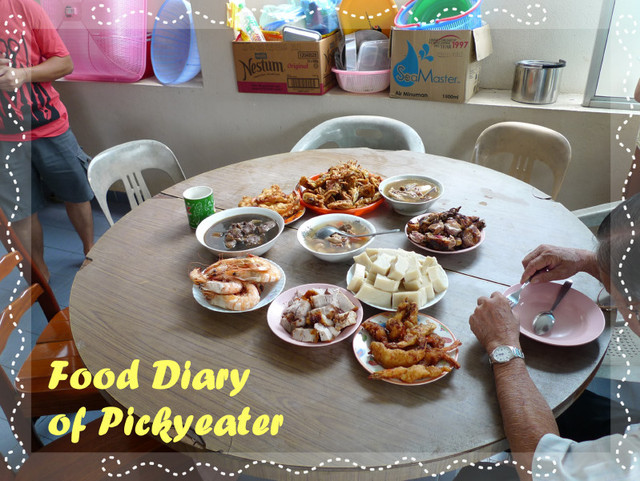
I think I have seen a different side of the Qing Ming festival; besides the solemnity of the tomb visiting alone as there is also the warmth of family gatherings and food.
It is indeed a whole new experience, but one that is educational and interesting, don't you think?
(Maybe most of you are used to it, and may think I sound ignorant? )
Well, what festival is not about food, you tell me?
Whatever the theme, it always, somehow ends up with food...

All the meals look fantastic, but my favourite is roast pork and I think that this is one of the most delicious kinds of meat!
ReplyDeleteThat's right... what festival is without food?
ReplyDeleteRemovals UK, it is also the most sinful..LOL!:p
ReplyDeleteThe Yum List, exactly...we are surrounded by food everywhere...:p
ReplyDeleteThis is why I come to see you; always tasty photos to teach us about your culture; love it.
ReplyDeleteRita
Rita, hahaha, your presence here touches me every single day; not to mention all your lovely comments!:)
ReplyDeleteYou have no idea how much it means to me;)
You too, have an awesome life in Cayman...surrounded by all the wonderful fresh catch from the sea..*winks*